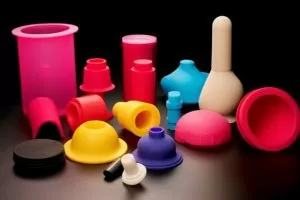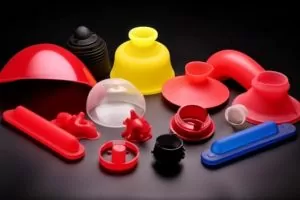Introduction
Silicone rubber wearables have quickly become popular due to their soft, flexible, and durable nature. From gaskets and seals to medical devices and precision components, silicone rubber materials have made an appearance in a wide variety of products across numerous industries.
Design and manufacturing processes play a pivotal role in creating high-quality silicone rubber wearables, from design and development through production methods like compression molding. A selection of production methods should provide consistent performance, precision, and durability high quality silicone parts – this includes compression molding.
Compression molding is a manufacturing process in which silicone material is preheated before being introduced into a mold cavity and subjected to pressure until it conforms to its shape. This technique offers several advantages over other mold-making processes, including being capable of creating parts with high precision and consistency. In this article, we’ll examine compression molding as a production method for silicone rubber wearables and discuss its many benefits more in-depth.

II. What is Compression Molding?
Compression molding is a manufacturing technique for creating high-quality silicone rubber parts. This technique utilizes a hydraulic press to force preheated silicone material into mold cavities where it cures and cools, ultimately producing finished silicone seals and parts.
Silicone molding involves selecting an appropriate silicone molding material, designing the mold, heating and compressing it into the desired form using heat, pressure, and curing time to achieve consistent results. The basic principles behind silicone rubber compression molding require selecting an appropriate silicone rubber material, designing the mold accordingly, and heating it until pliable before compressing it to shape the desired form. To ensure consistent results the process requires precise control over temperature, pressure, curing time, temperature regulation as well as curing times to produce reliable outcomes.

Compression molding offers several distinct advantages over more conventional molding processes such as injection and transfer molding, such as injection. It produces parts with greater precision and consistency while being used to produce parts with more complex geometries. Furthermore, compression molding makes low-volume production runs more cost-effective as less upfront investment is necessary in tooling and equipment; it may however take longer for large-volume runs due to slower production rates.
III. Design Considerations for Compression Molding Silicone Rubber Wearables
Design considerations play a crucial role in ensuring the success of silicone rubbers compression molding for wearables. Here are some key factors to keep in mind when designing for compression molding:
Part geometry and shape:
The design of the mold should take into consideration the part’s geometry and shape. Parts with sharp corners or intricate features may require more complex molds and longer curing times.
Material selection:
Choosing the right silicone rubber material is critical to the success of compression molding. Liquid silicone rubber (LSR) and high consistency rubber (HCR) are two common options. LSR injection molding is a low viscosity material that flows easily into molds, while HCR is a higher viscosity material that requires more pressure to mold. The choice of material will depend on the specific requirements of the part being produced.

Mold design and cavity considerations:
The mold design should be carefully considered to ensure the proper fit and function of the final product. The mold cavity must be precisely designed to accommodate the part’s geometry, and vents must be included to allow air to escape during the molding process.
Post-curing and mill softening:
After molding, the part may require post-curing and mill softening to ensure that it reaches the desired hardness and physical properties. Post-curing involves subjecting the part to high temperatures to complete the curing process, while mill softening involves grinding the part to achieve a smoother finish.
By considering these design factors, manufacturers can produce high-quality silicone rubber wearables through the compression molding process.
IV. Compression Molding vs Injection Molding for Silicone Rubber Wearables
Compression molding and injection molding are two popular production methods for silicone rubber wearables. Here’s how they compare:
Injection molding: Injection molding involves injecting molten silicone rubber material into a mold cavity using high pressure. Liquid injection molding (LIM) is a variation of injection molding process that involves pre-mixing the material before injection. Injection molding is typically faster than compression molding and can produce parts with greater precision and consistency. However, it requires a higher upfront investment in tooling and equipment.

Compression molding: As previously explained, compression molding involves placing preheated silicone material into a mold cavity and applying pressure to shape it. Compression molding is ideal for creating parts with more complex geometries and is better suited for low volume production runs. It also produces less wasted material than injection molding and requires less floor space. However, it can be slower than injection molding and may not be suitable for high-volume production runs.
When deciding which method to use for a particular application, manufacturers should consider the specific requirements of the product. For example, compression molding may be better suited for producing medical devices or food-grade products that require precise geometries and consistent performance.
V. Advantages of Compression Molding for Silicone Rubber Wearables
Compression molding offers many advantages for manufacturing silicone rubber wearables:
High-Quality Finished Parts:
Compression molding allows for the creation of high-quality silicone rubber wearables with superior surface finishes, precise dimensions, and consistent performance. The controlled compression process helps maintain uniformity while simultaneously eliminating defects – all factors contributing to superior product quality.

Consistent Performance and Hardness:
Compression molding offers precise control of key parameters such as pressure, temperature, and curing time for consistent hardness and performance characteristics across all molded parts, fulfilling desired specifications. This ensures each injection molded part achieves its intended specifications.
Less Wasted Material and Reduced Production Costs:
Compression molding results in significantly less wasted material compared to other molding processes, as the excess material released during compression can be reused thereby decreasing material waste and cutting production costs.
Low-Volume Production Capabilities:
Compression molding is ideal for low-volume production runs due to its flexibility and cost-effectiveness, making it the go-to method when fewer silicone rubber wearables are needed.
Compression molding can be highly automated with very minimal human labor required:
Once molds and parameters have been configured, compression molding can run itself with little human involvement and save both time and labor costs.
Compression molding’s versatility extends far beyond low-volume production; it can also meet large batch needs efficiently. Compression molding’s efficient molding of multiple parts simultaneously even when they vary in thickness allows manufacturers to meet high-volume demands effectively.

Overall, compression molding provides precise control, high-quality output, cost-effectiveness, and versatility, making it an excellent option for manufacturing various silicone rubber wearables.
VI. Regulatory Requirements for Silicone Rubber Wearables
Regulatory requirements play a vital role in the production of silicone rubber wearables to ensure their safety and reliability. Here’s an overview of regulatory standards, the importance of compliance, and how compression molding can help meet these requirements:
Overview of regulatory standards:
Various regulatory bodies, such as the Food and Drug Administration (FDA), International Organization for Standardization (ISO), and specific industry organizations, establish standards for silicone rubber materials. These standards address factors like material composition, performance, biocompatibility, and environmental considerations.
Importance of meeting industry standards and regulations:
Compliance with industry standards and regulations is crucial to ensure the safety, quality, and reliability of silicone rubber wearables. Adhering to these standards helps protect end-users, such as patients or consumers, and ensures that the products meet the necessary performance requirements.
How compression molding ensures compliance:
Compression molding can aid in meeting regulatory requirements for silicone rubber wearables. Here’s how:
a. Material control:
Compression molding allows for precise control over the material used. This ensures that the silicone rubber material used in wearables meets the specific regulatory standards, such as being food-grade or biocompatible for medical devices.
b. Consistency and quality:
Compression molding offers high-quality, consistent parts with excellent dimensional accuracy. This reliability helps meet the performance requirements specified in regulatory standards.
c. Mold design and process control:
Compression molding allows for intricate mold design, enabling the production of wearables with complex geometries. The process also offers control over key parameters like temperature, pressure, and curing time, ensuring that the parts meet the required specifications outlined in regulatory standards.

d. Documentation and traceability:
Compression molding enables clear documentation and traceability throughout the manufacturing process. This documentation provides evidence of compliance with regulatory standards, including material certifications, process validation, and quality control measures.
By utilizing compression molding for silicone rubber wearables, manufacturers can adhere to regulatory requirements more effectively, ensuring the safety, quality, and reliability of their products. Compliance with these standards enhances consumer trust and confidence in the wearables, whether they are medical devices, food-grade products, or other industry-specific applications.

Conclusion
In conclusion, compression molding offers several significant benefits for the production of silicone rubber wearables. Its advantages include the ability to create high-quality finished parts with consistent performance and hardness. The process minimizes wasted material and reduces production costs, making it a cost-effective solution. Compression molding is well-suited for both low-volume and large-batch production, accommodating various thicknesses and complex geometries.
Looking ahead, compression molding holds promising potential in the industry. As technology and manufacturing processes continue to advance, compression molding can further optimize production efficiency and enhance the quality of silicone rubber wearables. Its ability to meet regulatory requirements positions it as a valuable method for producing safe and compliant products.
Therefore, manufacturers and engineers in the silicone rubber wearables industry must consider the benefits of compression molding. By embracing this manufacturing process, they can unlock the advantages of high-quality output, cost-effectiveness, and compliance with regulatory standards. It is a call to action for the industry to explore and adopt compression molding as a preferred method for manufacturing silicone rubber wearables, ensuring the delivery of top-notch products to meet the evolving needs of consumers and industries alik.



